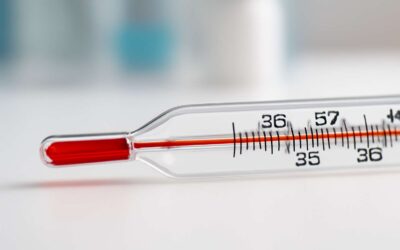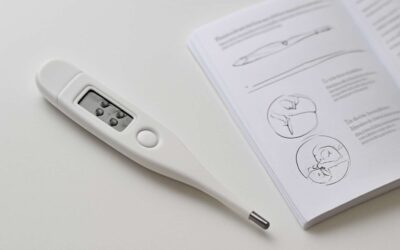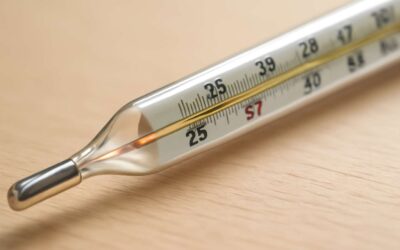Understanding Meat Thermometers
Types of Meat Thermometers – Array
In the shadowed realm of culinary precision, understanding the different types of thermometer meat is essential for unlocking the secret to perfectly cooked fare. Each thermometer holds a unique power—some whisper their truth through the depths of the meat, while others command attention with a quick, piercing glance. The three most common types are the instant-read digital thermometer, the dial or analogue thermometer, and the oven-safe probe thermometer.
The instant-read digital thermometer offers swift, accurate readings—ideal for those fleeting moments when perfection must be seized. The dial thermometer, with its vintage charm, provides a more visual approach, often used for roasting or slow-cooking. Meanwhile, the oven-safe probe thermometer delves into the meat, whispering its temperature steadily as the meat transforms in the heat.
- Instant-read digital thermometers
- Dial or analogue thermometers
- Oven-safe probe thermometers
Each type’s spectral presence in the kitchen shapes the final outcome, weaving a tapestry of mastery over the mysterious art of thermometer meat.
How Meat Thermometers Work – Array
In the delicate dance of culinary mastery, understanding how meat thermometers work elevates the art of perfect cooking. These silent guardians of flavour and safety whisper the secrets of temperature with quiet authority, transforming raw ingredients into tender, succulent fare. Each thermometer meat, whether digital or analogue, operates through a symphony of technology that converts thermal energy into a readable display, ensuring precision at every stage of your culinary journey.
At the core of this process lies a simple yet sophisticated principle: measuring the internal temperature of meat to determine its doneness. For instance, an instant-read digital thermometer utilises a thermocouple or thermistor to provide quick, accurate readings—sometimes in mere seconds. This rapid response is invaluable when time is of the essence, allowing chefs and home cooks alike to catch the meat at its perfect point of doneness.
Meanwhile, traditional dial thermometers rely on the expansion of a metal coil or bi-metal strip, which moves a needle across a calibrated face—offering a nostalgic, visual representation of temperature. Both types of thermometer meat serve as vital tools in the pursuit of culinary excellence, each with its unique charm and function. Whether you’re roasting a joint or searing a steak, knowing how your thermometer works is the key to unlocking consistency and confidence in every dish.
Choosing the Right Meat Thermometer
Factors to Consider – Array
Choosing the right thermometer meat is not just about accuracy; it’s about ensuring every cut reaches its full flavour potential while keeping safety at the forefront. When selecting a thermometer meat, consider the temperature range it can measure—some recipes demand high precision, especially for delicate cuts or slow-cooked roasts. A reliable thermometer meat should also offer quick response time, so you’re not left guessing during busy cooking moments.
Beyond functionality, think about durability and ease of use; a sturdy, stainless-steel probe will withstand the rigours of the outdoor kitchen or busy family dinner. For those who value versatility, an instant-read thermometer meat provides instant feedback, making it easier to monitor multiple dishes with confidence. Ultimately, choosing a thermometer meat that suits your cooking style can elevate your culinary experience—ensuring each meal is both safe and sublime.
Best Meat Thermometers for Different Needs – Array
Choosing the right thermometer meat can transform your culinary adventures from good to extraordinary. With countless options flooding the market, finding a device that aligns perfectly with your cooking style is essential. Whether you’re a seasoned chef or a weekend griller, the best meat thermometers for different needs are designed to deliver precise readings with ease and speed. Accuracy isn’t just a matter of convenience; it’s a matter of safety and flavour. A high-quality thermometer meat ensures your steaks are perfectly tender, your roasts are succulent, and your poultry reaches safe temperatures without guesswork.
For those who value speed and versatility, instant-read thermometers are a game-changer. They provide quick feedback, enabling you to monitor multiple dishes seamlessly. Meanwhile, more advanced digital models with probe thermometers are ideal for slow-cooking or smoking, where maintaining a consistent temperature over hours is crucial. In the end, selecting a thermometer meat tailored to your culinary needs makes all the difference—turning everyday meals into memorable feasts!
How to Use a Meat Thermometer Correctly
Proper Insertion Techniques – Array
A precise reading can make or break a perfectly cooked steak or roast. Proper insertion of a thermometer meat is crucial to ensure accurate results and food safety. The key is to insert the probe into the thickest part of the meat, avoiding bones, fat, or gristle, which can skew the temperature. For best results, insert the thermometer at a slight angle and ensure the tip is fully embedded.
To avoid common pitfalls, use a steady hand and avoid pressing the probe against the pan or grill surface. Wait a few seconds for the reading to stabilise before noting the temperature. This approach guarantees you’re getting the true core temperature, not just surface heat.
Remember, a well-inserted thermometer meat reveals the precise moment your dish reaches its ideal doneness, preventing undercooking or overcooking. Proper technique is simple but essential for professional results.
Reading and Interpreting Results – Array
Mastering the art of reading and interpreting results from a thermometer meat is an exercise in patience and finesse. A digital or analogue device, when used correctly, reveals the true story behind your culinary masterpiece — whether it’s juicy steak or succulent roast. The key is not just in the reading itself but in understanding what the numbers truly signify. Remember, a thermometer meat isn’t just a gadget; it’s your culinary confidant, whispering secrets of perfect doneness.
Once the probe is inserted properly into the thickest part of the meat, allow a few seconds for the reading to stabilise. A steady figure is your best indication of the actual internal temperature. If the thermometer meat shows a reading that’s just shy of your target, patience is paramount. Conversely, a temperature overshoot might mean it’s time to remove your dish from the heat source.
- Always calibrate your thermometer meat regularly to ensure accuracy.
Interpreting the results involves a keen eye and a dash of culinary intuition. Knowing that a medium-rare steak typically hits around 52°C (125°F) empowers you to judge doneness with confidence. Remember, the goal isn’t merely to hit a number but to understand what that number signifies in terms of texture, moisture, and overall quality. When precision meets understanding, your cooking reaches a level of finesse that would make even the most discerning gourmand nod in approval.
Cleaning and Maintenance – Array
In the realm of culinary alchemy, the precision and longevity of your thermometer meat hinge upon diligent cleaning and maintenance. A well-cared-for device not only guarantees accurate readings but also preserves the sanctity of your kitchen’s health. Regular upkeep transforms a humble thermometer meat into a trusted squire, ready to unveil the secrets of doneness with unwavering fidelity.
Start by rinsing the probe immediately after each use with warm, soapy water. Avoid immersing the entire device in water if it has electronic components—simply wipe the exterior and the probe. For digital models, ensure the battery compartment remains dry and free from corrosion. Calibration is the cornerstone of accuracy; periodically test your thermometer meat against boiling or ice water to confirm it’s within acceptable margins. If discrepancies arise, recalibrate or replace the device to maintain its regal performance.
Proper storage is equally vital—store your thermometer meat in a dry, protected place, away from direct sunlight and extreme temperatures. To uphold peak performance, follow these simple steps:
- Clean the probe after every use with gentle, non-abrasive cleaners.
- Check calibration regularly—at least once a month or before critical cooking sessions.
- Store in a protective case or a designated drawer, ensuring the probe remains free from damage.
By adhering to these rituals of maintenance, your thermometer meat will serve faithfully, revealing the true essence of each culinary creation with impeccable accuracy and enduring reliability. A vigilant keeper of your kitchen’s secrets, it transforms mere cooking into an art of precision and mastery.
Importance of Accurate Meat Temperature
Ensuring Food Safety – Array
Ensuring the correct temperature when cooking meat isn’t just a matter of taste—it’s a vital step in safeguarding health. A reliable thermometer meat helps prevent the dreaded risk of foodborne illnesses, such as Salmonella or E. coli, which can lurk in undercooked poultry or beef. When meat reaches the appropriate internal temperature, it signals that harmful bacteria have been effectively killed, making every bite safe and satisfying.
In rural kitchens where tradition meets modern safety standards, the importance of an accurate thermometer meat cannot be overstated. It’s a silent guardian, offering peace of mind amid the sizzle of the grill or the slow hum of the oven. Remember, meat that’s cooked to the right temperature preserves its natural juices, tenderness, and flavour—while also protecting loved ones from potential health hazards.
Understanding the significance of proper meat temperature ensures that each meal is not only delicious but also safe. It’s a small investment with tremendous benefits, especially when shared around the table with family or friends.
Achieving Perfect Doneness – Array
Achieving the perfect level of doneness in meat isn’t just about aesthetics; it’s a crucial factor in ensuring both flavour and safety. An accurate thermometer meat acts as your culinary compass, guiding you to that sweet spot where meat is tender, juicy, and fully cooked. Overcooking can turn your steak into shoe leather, while undercooking leaves you vulnerable to nasty bacteria lurking in poultry or beef.
To get it just right, monitoring the internal temperature with a reliable thermometer meat is indispensable. Remember, each type of meat has its ideal temperature zone—beef, chicken, pork, or lamb—so knowing these figures helps you avoid the common pitfalls of guesswork. A quick glance at the thermometer meat reading ensures you’re serving up a meal that’s both delicious and safe, transforming your kitchen into a culinary laboratory of precision.
Tips for Using a Meat Thermometer Effectively
Common Mistakes to Avoid – Array
Using a thermometer meat might seem straightforward, but even the most seasoned cooks make simple mistakes that compromise the outcome. An often overlooked tip is to avoid leaving the thermometer in the meat for too long, as this can cause inaccurate readings or even damage the device. Quick, precise measurements are the key to achieving culinary mastery. Remember, temperature readings should be taken at the thickest part of the meat, away from bone or fat, to ensure accuracy.
One common mistake is relying solely on visual cues like colour or texture. While tempting, these indicators are unreliable, especially with meats like poultry or pork. Instead, trust your thermometer meat to give an objective reading. To maximise accuracy, always calibrate your thermometer regularly and keep it calibrated according to the manufacturer’s instructions. This simple habit can be the difference between a perfectly cooked steak and an overcooked disappointment.
For best results, consider the timing of your measurement. Insert the thermometer at the right moment—usually near the end of cooking or when the meat has rested. This prevents temperature fluctuations from skewing results. Remember, the goal is to avoid common mistakes that can compromise food safety or ruin the desired doneness. Precision and patience are your best allies when working with a thermometer meat, ensuring every cut is cooked to perfection.
Best Practices for Consistent Results – Array
Precision in cooking is an art rooted in patience and trust—trust in your thermometer meat, that silent sentinel guiding every cut and sizzle. When wielded with finesse, a reliable thermometer transforms the mundane act of cooking into a symphony of flavours and textures. To harness its full potential, it’s essential to understand the best practices for consistent results.
One effective tip is to always insert the thermometer meat at the correct stage of cooking — usually near the end or during resting. This approach ensures you avoid temperature fluctuations that can lead to overcooking or undercooking. Additionally, regularly calibrating your thermometer is a simple yet crucial habit that guarantees accuracy, preventing costly culinary missteps.
- Ensure the thermometer meat is inserted into the thickest part of the cut, away from bone or fat, for an accurate reading.
- Use quick, decisive insertions to avoid losing heat or causing unnecessary juices to escape.
- Record readings at consistent intervals, especially when working with multiple pieces of meat, to maintain uniformity.
By combining these practices with a keen eye for detail, every dish becomes an opportunity to perfect your craft—making the most of your thermometer meat and elevating your culinary mastery to new heights.
Latest Trends and Innovations in Meat Thermometry
Wireless and Smart Thermometers – Array
In the realm of culinary precision, the advent of wireless and smart thermometers has revolutionised how chefs and home cooks alike approach meat thermometry. These innovations transcend traditional limitations, offering real-time data that enhances the art of achieving perfect doneness. Imagine a thermometer meat that seamlessly integrates with your digital ecosystem, providing instant updates via your smartphone—no more guesswork, no more unwarranted interruptions. The latest trends focus on intuitive interfaces, durable designs, and connectivity features that elevate meat thermometry to a new echelon of sophistication.
One of the most captivating developments is the rise of array-based smart thermometers, which utilise multiple sensors to monitor different parts of a cut simultaneously. This technology ensures uniform cooking, especially in thicker or more complex meat cuts, reducing the risk of over or undercooking. Furthermore, these devices often feature built-in algorithms that predict cooking progress, allowing users to anticipate perfect results with unprecedented confidence. As the demand for food safety and culinary excellence continues to grow, innovative thermometer meat solutions are shaping the future of kitchen technology.
Innovative Features – Array
In the ever-evolving landscape of culinary technology, the latest trends in thermometer meat innovations promise to elevate cooking precision to unprecedented heights. Cutting-edge array-based thermometers harness multiple sensors, creating a symphony of data points that monitor different regions of a cut simultaneously. This ensures the meat cooks evenly, reducing the dreaded risk of overcooking or undercooking—a common nemesis in the quest for perfection.
What truly sets these innovations apart are their intelligent features. Many array thermometers now incorporate sophisticated algorithms that forecast the remaining cooking time, transforming guesswork into science. Imagine a device that not only reads temperature but also predicts the exact moment your meat reaches prime doneness, all via a seamless digital interface. The integration with smartphone apps means you can stay connected and informed, even from afar, truly making the thermometer meat an extension of your culinary genius.
- Multiple sensors for uniform temperature monitoring
- Predictive cooking algorithms for perfect results
- Seamless smartphone connectivity for real-time updates
As these technological marvels continue to develop, the focus remains on durability, ease of use, and connectivity. The future of thermometer meat lies in devices that are as resilient as they are intelligent, ensuring chefs and home cooks alike can master the art of perfect meat with confidence and finesse. Truly, this fusion of innovation and tradition heralds a new era in culinary excellence.
Cost and Value: Finding the Best Meat Thermometer for Your Budget
Affordable Options – Array
In the realm of culinary precision, finding a thermometer meat that balances cost and value can feel like searching for a rare gem. The good news? There are affordable options that don’t compromise on accuracy or durability. For those just beginning their journey into perfecting meat cooking, budget-friendly thermometer meat models offer a delightful blend of essential features and reliable performance. These devices often come with straightforward digital displays and quick response times, making them a prudent choice for home chefs.
Price should never be the sole factor when selecting a thermometer meat; instead, consider the overall value it provides. A well-chosen thermometer can elevate your cooking, ensuring every cut reaches ideal doneness with ease. For those who crave more sophistication without breaking the bank, options like manual dial thermometers or basic digital models often suffice. They deliver precise readings and are built to last, transforming your culinary endeavours into moments of mastery. After all, the true enchantment lies in the harmony between cost, craftsmanship, and the joy of perfectly cooked meat.
Premium Features and High-End Models – Array
Budget constraints shouldn’t mean sacrificing accuracy or reliability when it comes to choosing a thermometer meat. Many high-end models promise precision but often come with a hefty price tag that can deter casual cooks or those new to grilling and roasting. Fortunately, there are premium features available in models that strike a balance between cost and performance. These high-end thermometers offer advanced functionalities such as instant response times, multiple probe capabilities, and even smartphone integration—features once reserved for professional kitchens.
For those seeking the best thermometer meat without overspending, it’s worth considering models that incorporate essential premium features. Some devices include durable materials that withstand high temperatures and frequent use, ensuring longevity. Others boast calibration options for ultimate accuracy, a vital trait for achieving perfectly cooked meat every time.
- Wireless connectivity for remote monitoring
- Touchscreen interfaces for easy operation
- Extended temperature ranges for versatile cooking
These enhancements elevate your culinary experience without the need for a luxury budget.




0 Comments